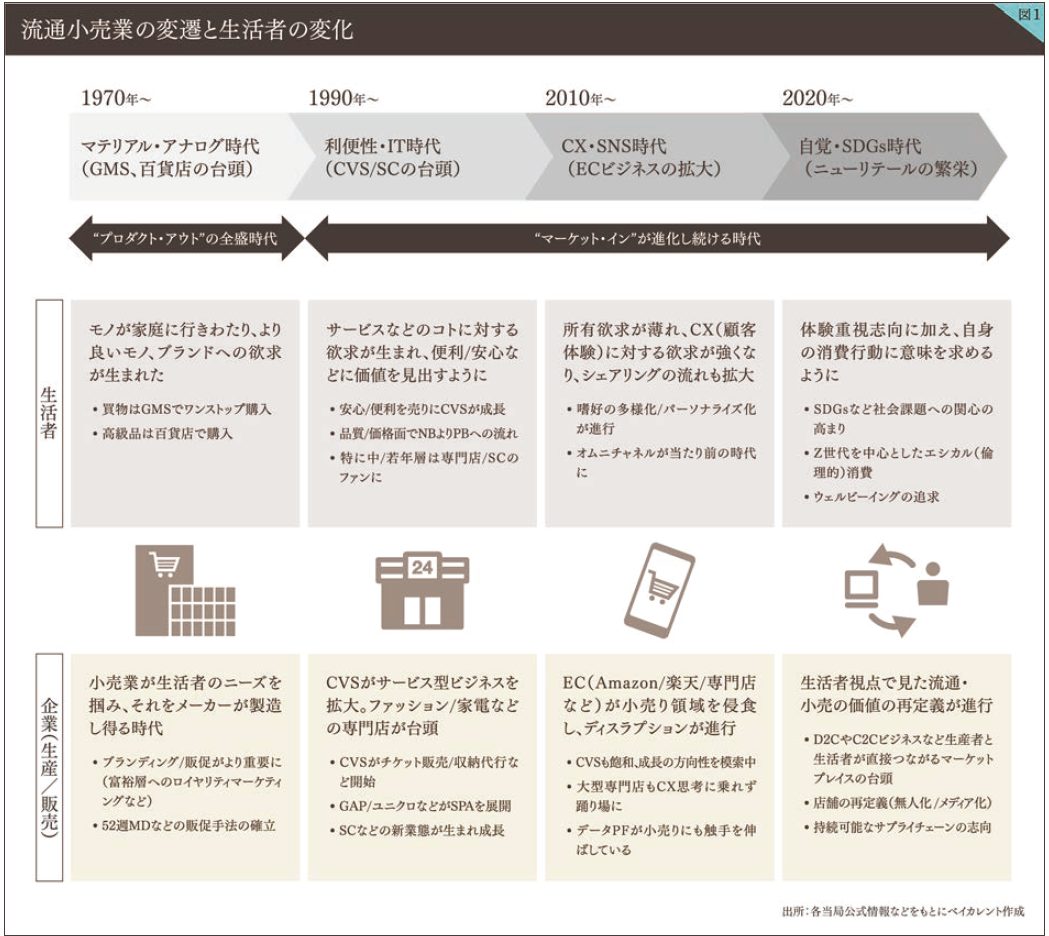Supply Chain Reform in the Retail Distribution Industry Protecting the abundance of food

Transition and Current State of Japan's Retail Distribution Industry
■ The Merits and Demerits of Japan's Unique "Good Things at Low Prices" Culture
The retail distribution industry is the foundation that supports the basic necessities of life: food, clothing, and shelter. However, compared to Europe and the United States, Japan's retail distribution industry faces several challenges that are far from optimistic. One of these challenges is the tendency towards low productivity and profit margins.
Japan's unique culture of valuing "providing good products at low prices" as a virtue is often associated with retail distribution companies such as Daiei, but a similar tendency can also be observed in manufacturing companies like Matsushita Electric Industrial Co., Ltd. (now Panasonic Holdings) and Toyota Motor Corporation.
However, this can only be considered a virtue from the 1950s to the 1970s. During this period, when the three sacred treasures of the era—black-and-white televisions, washing machines, and refrigerators—were beyond the reach of ordinary people, companies felt a sense of mission to provide these home appliances at low prices and strived to achieve this through their own efforts. Additionally, consumer needs were simple: "Desiring things that others want or possess simply because one does not have them," and products sold one after another through product-out sales.
However, as Japan entered a period of high economic growth, and basic needs were met and incomes increased, consumer trends shifted towards more specialized items that met individual needs, such as higher-performance televisions and more multifunctional refrigerators. As the market transitioned from product-out to market-in, the approach of "good things at low prices," which tends to be based on mass production, could no longer meet the individual needs of consumers (Figure 1).
In Europe and the United States, there has been active restructuring in the retail distribution industry, with well-capitalized supermarket chains in the United States acquiring local competitors and taking over their entire trade areas, emphasizing efficiency through large-scale expansion.
In contrast, Japan's attempt to offer "good quality at low prices" and a "dazzling selection of products," while pursuing what seemed like excessive quality, has exacerbated the market "distortion," turning it into a "market where products won't sell unless they're cheap."
■ Japan: A "Cheap Country" Created by Stagnant Prices
This characteristic Japanese distortion can be seen in various products and services, but gyudon fast food is a prime example. Major chains, struggling with the procurement of beef, have been caught in a price war, leading to no increase in prices over the past 20 years. In fact, around 2010, a few years after the Lehman Shock, companies engaged in what became known as the "Gyudon War," where they collectively cut prices. How many people felt uneasy when they saw the lowest price of 270 yen at that time? Although prices have risen since then, they still have not reached the levels of 2000. This serves as a representative example of the "distortion" that makes it difficult to raise prices (price increases) due to relentless price cuts.
It is clear that prices in Japan are at a low level compared to other countries. Examining the trends in the consumer price index...

To read the full text, please download the PDF.
DownloadPDF(1.79 MB)